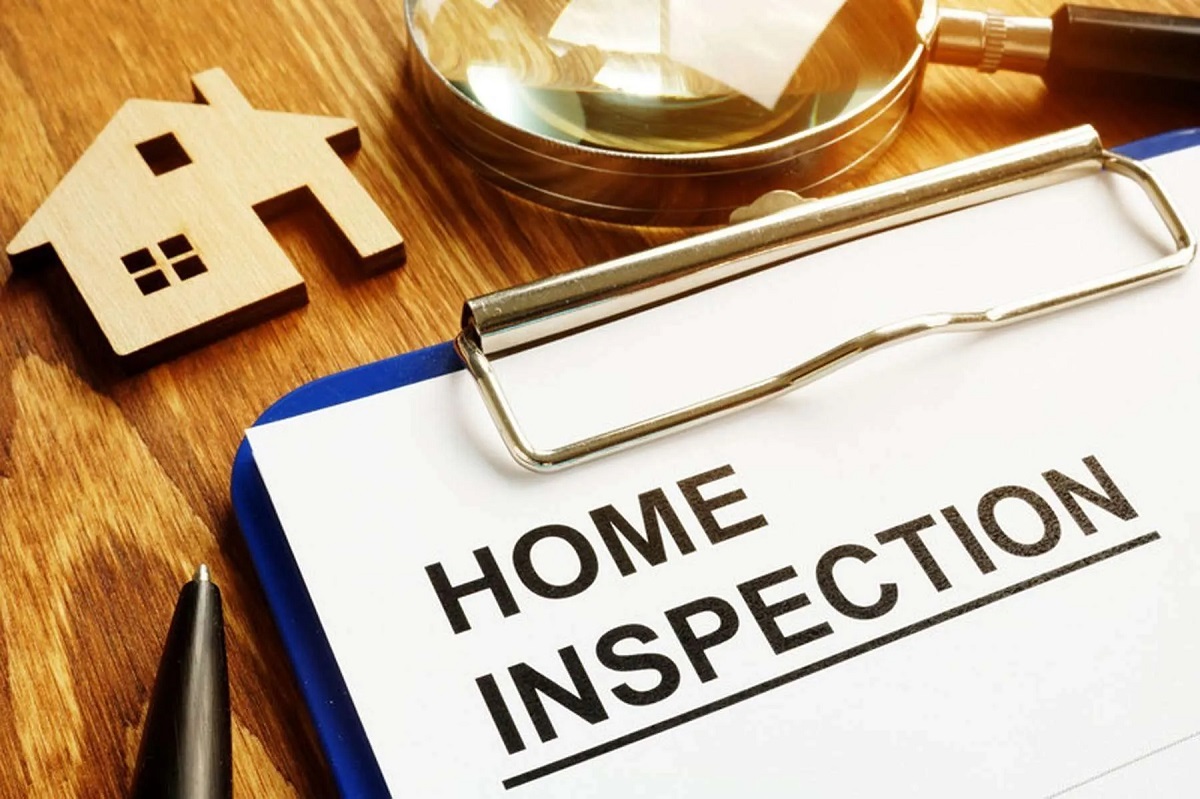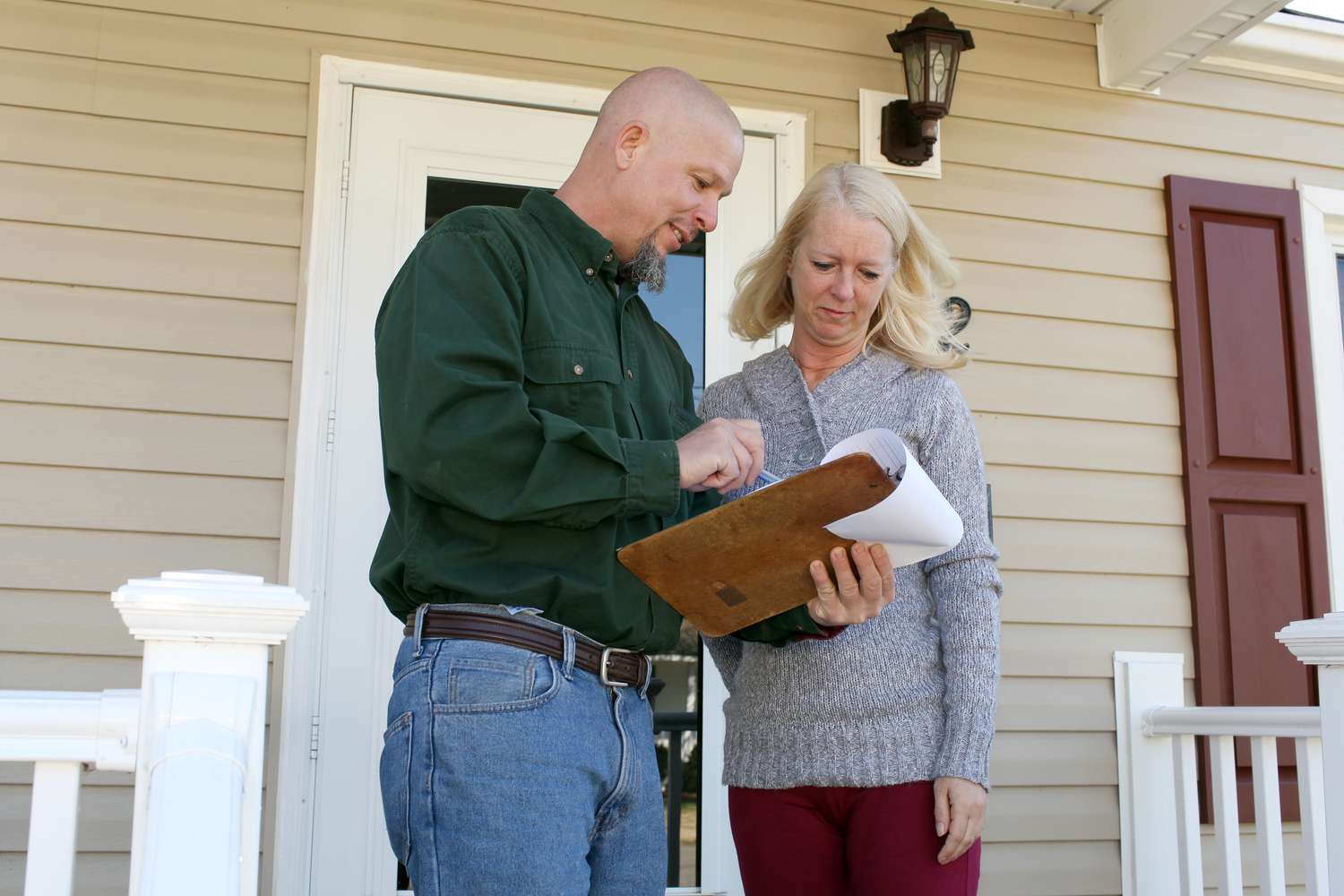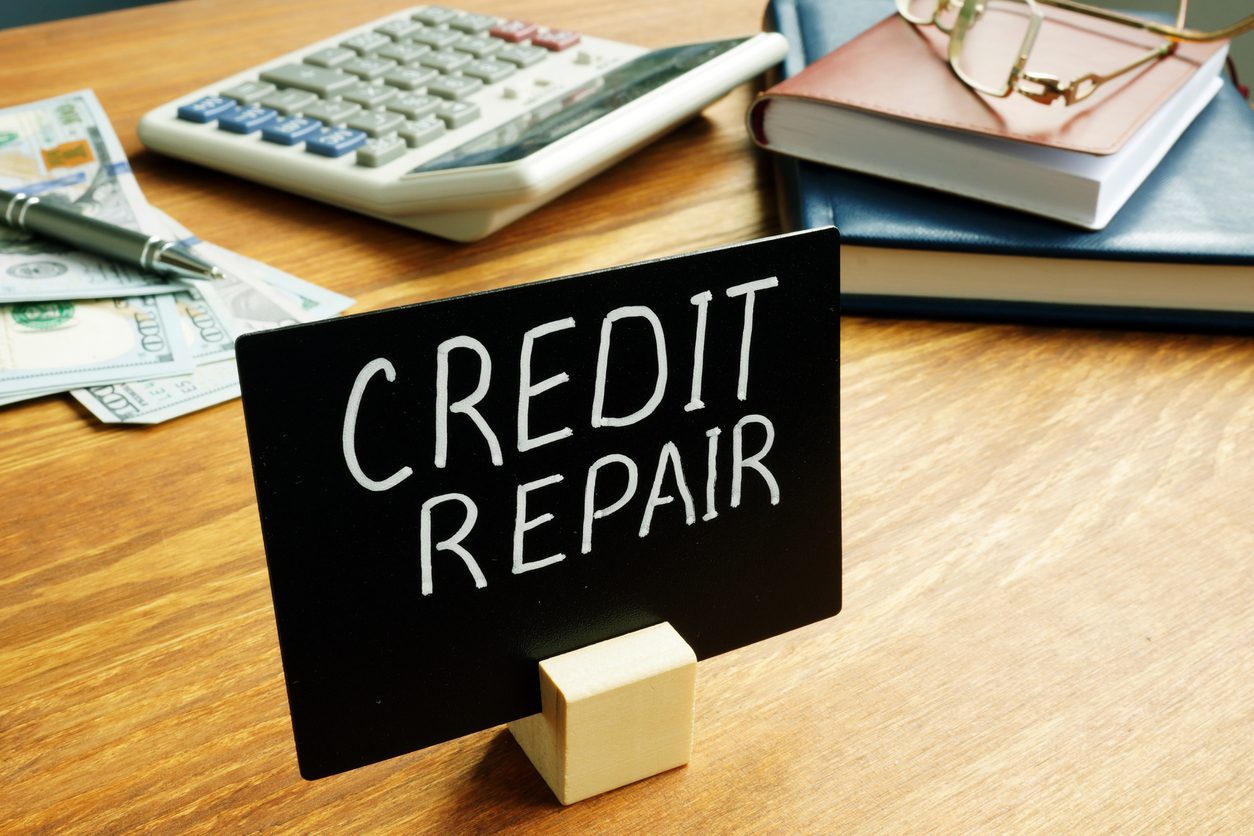Home>Home Maintenance>How To Add A Home Buyer Credit After An Inspection


Home Maintenance
How To Add A Home Buyer Credit After An Inspection
Modified: March 6, 2024
Learn how to add a home buyer credit after your inspection and save on home maintenance costs. Discover valuable tips and tricks for maximizing your budget.
(Many of the links in this article redirect to a specific reviewed product. Your purchase of these products through affiliate links helps to generate commission for Storables.com, at no extra cost. Learn more)
Introduction
Welcome to the ultimate guide on how to add a home buyer credit after an inspection. Whether you’re a first-time homebuyer or a seasoned homeowner, understanding the process of negotiating a credit after a home inspection is crucial. It can potentially save you thousands of dollars and ensure that you’re making an informed decision about your investment.
Before we delve into the details of adding a credit, let’s first clarify what a home buyer credit entails. Essentially, a home buyer credit is an agreement between the buyer and the seller to have a portion of the purchase price credited back to the buyer to cover the cost of repairs or upgrades needed after the home inspection.
A home inspection plays a vital role in the homebuying process. It is a thorough examination of the property conducted by a qualified professional to identify any issues or concerns that may affect the home’s value or safety. The purpose of the inspection is to provide the buyer with a comprehensive understanding of the property’s condition before finalizing the purchase.
Key Takeaways:
- Negotiating a home buyer credit after an inspection can save you money and ensure the property meets your expectations. Review the inspection report, assess repair costs, and negotiate with the seller for a successful outcome.
- A home inspection is crucial for identifying potential issues and negotiating a home buyer credit. Document the agreement in writing and submit the request to ensure a smooth process. Open communication and cooperation are key to success.
Understanding the Home Buyer Credit
Now that we have a basic understanding of the home buyer credit, let’s explore its significance in the homebuying process. Adding a credit allows the buyer to address any necessary repairs or upgrades without bearing the full financial burden. It provides an opportunity to negotiate with the seller and potentially save money while ensuring that the home meets the buyer’s expectations.
It’s important to note that not all repairs or upgrades will warrant a credit. Minor cosmetic issues, such as peeling paint or outdated fixtures, may not be eligible for a credit. However, major issues such as faulty electrical systems, plumbing problems, or a leaky roof are more likely to qualify for a credit.
The decision to request a credit should be based on the potential cost and complexity of the repairs or upgrades. It’s important to carefully consider the impact that these issues may have on the value and livability of the home. Consulting with a professional home inspector or a trusted contractor can provide valuable insights into the severity and estimated cost of the necessary repairs.
It’s also worth noting that the seller’s willingness to negotiate a credit may depend on the current real estate market conditions and the demand for the property. In a competitive housing market, sellers may be less inclined to offer a credit as they have multiple offers to choose from. However, in a buyer’s market, sellers may be more open to negotiation in order to close the deal.
By understanding the home buyer credit and its importance, you’ll be well-equipped to navigate the negotiation process after a home inspection. Now, let’s dive into a step-by-step guide on how to successfully add a home buyer credit after an inspection.
Importance of a Home Inspection
A home inspection is a critical step in the homebuying process that should never be overlooked. It provides buyers with a comprehensive understanding of the property’s condition and helps them make an informed decision before finalizing the purchase. Let’s explore the importance of a home inspection in more detail.
1. Identifying Potential Issues: A professional home inspector thoroughly examines the property, checking for any underlying issues, such as structural concerns, electrical problems, plumbing issues, or pest infestations. Identifying these potential issues early on can save buyers from expensive repairs or renovations down the line.
2. Negotiation Tool: The information gained from a home inspection can be used as a negotiation tool. If significant issues are discovered during the inspection, buyers can request repairs or credits from the seller before closing the deal. This gives buyers the opportunity to ensure that they are getting the best value for their investment.
3. Safety and Peace of Mind: A home inspection provides buyers with peace of mind, knowing that the property they are purchasing is safe and in good condition. By uncovering any potential safety hazards, such as faulty wiring or mold, buyers can take the necessary steps to address these issues before moving in.
4. Financial Planning: Knowing the condition of the property allows buyers to plan for future expenses. They can budget for necessary repairs or upgrades and assess whether they can comfortably afford the home in its current state.
5. Disclosure Document: In many jurisdictions, sellers are required to provide a disclosure document that indicates any known issues or repairs done on the property. However, not all sellers may be aware of every issue with the property. A professional home inspection adds an extra layer of assurance for buyers, ensuring that all potential issues have been thoroughly assessed.
6. Educational Opportunity: For first-time homebuyers, a home inspection provides a valuable learning experience. Home inspectors often take the time to educate buyers about maintenance tasks, the location of important utility shut-offs, and other essential information about the home. This knowledge equips buyers with the skills needed to maintain their new property properly.
In summary, a home inspection is a crucial step in the homebuying process. It helps buyers make informed decisions, negotiate repairs or credits, ensure their safety, and plan for future expenses. By understanding the significance of a home inspection, buyers can approach the process with confidence and peace of mind.
Step-by-Step Guide to Adding a Home Buyer Credit After an Inspection
Adding a home buyer credit after a home inspection requires careful negotiation and documentation. Follow this step-by-step guide to navigate the process smoothly:
- Review the Home Inspection Report: Carefully go through the home inspection report to understand the issues and potential repairs or upgrades needed. Take note of any significant findings that may warrant a credit.
- Assess the Cost of Repairs or Upgrades Needed: Consult with trusted contractors or professionals to get an accurate estimate of the costs involved in addressing the identified issues. This will help you determine a reasonable credit amount to request.
- Negotiate with the Seller or Listing Agent: Initiate a conversation with the seller or their listing agent to discuss the necessary repairs or upgrades. Present them with the information from the home inspection report, along with the estimated costs. Clearly communicate your request for a home buyer credit to cover those expenses.
- Document the Agreement in Writing: Once both parties agree on a credit amount, it’s crucial to document the agreement in writing. This can be done through an addendum to the purchase contract or a separate agreement. The document should clearly state the agreed-upon credit amount, the repairs or upgrades it covers, and any specific terms or conditions.
- Submit the Request for Home Buyer Credit: Submit the written agreement to your real estate agent or attorney, who will ensure that the request for the home buyer credit is properly documented. They will coordinate with the seller or their agent to ensure the credit is applied correctly during the closing process.
It’s important to note that the success of adding a home buyer credit after an inspection will depend on negotiations and the willingness of the seller to agree to the credit. Factors such as the real estate market, the condition of the property, and the seller’s motivation can influence the outcome. Therefore, maintaining open communication and being reasonable in your requests is essential for a successful negotiation.
By following this step-by-step guide, you’ll be better prepared to navigate the process of adding a home buyer credit after a home inspection. Remember to consult with professionals and seek guidance from your real estate agent or attorney throughout the negotiation process to ensure a smooth transaction.
Review the Home Inspection Report
The first step in adding a home buyer credit after a home inspection is to thoroughly review the home inspection report. This report is a detailed document prepared by a qualified home inspector, outlining the findings and issues identified during the inspection process.
When reviewing the home inspection report, pay close attention to any significant issues or concerns that may require repairs or upgrades. Look for areas where the condition of the property does not meet your expectations or could have an impact on its value or safety.
Take note of any major structural issues, electrical or plumbing problems, roof leaks, water damage, pest infestations, or other significant defects that were identified during the inspection. These are the issues that may warrant a home buyer credit.
It is important to remember that not all issues identified in the home inspection report may qualify for a credit. Minor cosmetic issues or normal wear and tear may not necessarily be grounds for requesting a credit. Focus on the issues that are significant and require immediate attention or could result in future expenses.
If you have any questions or concerns about the findings in the home inspection report, do not hesitate to reach out to the inspector for clarification. They can provide additional insights and guidance regarding the severity of the issues and the potential cost of repairs or upgrades.
By thoroughly reviewing the home inspection report, you will have a clear understanding of the specific issues that need to be addressed, which will help in the next steps of the process – assessing the cost of repairs or upgrades needed and negotiating a credit with the seller.
When negotiating a home purchase after an inspection, consider asking for a home buyer credit to cover any necessary repairs or issues that were discovered. This can help offset the cost of fixing any problems and make the purchase more affordable.
Assess the Cost of Repairs or Upgrades Needed
After reviewing the home inspection report, the next step in adding a home buyer credit is to assess the cost of the repairs or upgrades that are needed. This step is crucial in determining the appropriate amount to request as a credit from the seller.
Consult with trusted contractors, specialists, or professionals in the relevant fields to obtain accurate estimates for the repairs or upgrades. These professionals can provide insights into the scope of work required and the associated costs.
Obtain multiple quotes if possible and compare them to ensure that you have a realistic understanding of the expenses involved. Keep in mind that some issues may have different levels of urgency or severity, and certain repairs may have unforeseen costs that arise during the process.
It’s important to be thorough in assessing the cost of repairs or upgrades. Consider both the immediate repairs that need to be addressed before moving into the property and any long-term maintenance or upgrades that may be required in the future.
When calculating the cost, take into account not only the materials and labor but also any permits or inspection fees that may be required for the work. Additionally, factor in any potential inconvenience or disruption to your living situation while the repairs or upgrades are being carried out.
By assessing the cost of repairs or upgrades needed, you will have a clear understanding of the financial impact that these issues will have. This information will be crucial when negotiating a credit with the seller in the next step of the process.
Remember to keep detailed records of the estimates and consultations with professionals. These records will serve as evidence during the negotiation process and will help support your request for a home buyer credit.
Negotiate with the Seller or Listing Agent
Once you have reviewed the home inspection report and assessed the cost of repairs or upgrades needed, it’s time to initiate a negotiation with the seller or their listing agent. This step is crucial in reaching an agreement on a home buyer credit that covers the identified issues.
Start the negotiation process by presenting the findings from the home inspection report to the seller or their listing agent. Clearly communicate the specific repairs or upgrades that are required and provide them with the estimates or quotes obtained from professionals.
It’s important to approach the negotiation with a cooperative and constructive mindset. Understand that the seller may have different perspectives or financial constraints, and finding a mutually beneficial solution is key.
Highlight the potential impact that the identified issues may have on the value, safety, or livability of the property. Explain how a home buyer credit would address these concerns and ensure that the property meets your expectations as the buyer.
During the negotiation, be open to alternative solutions or compromises. The seller may propose to fix certain issues themselves, provide a credit for a portion of the repairs, or offer other incentives as an alternative to a home buyer credit.
Keep in mind that the success of the negotiation will depend on various factors, including the current real estate market conditions and the motivation of the seller. In some cases, the seller may not be willing to offer a credit, especially in competitive markets. Be prepared for different responses and be flexible in your approach.
Throughout the negotiation process, maintain clear and respectful communication with the seller or their listing agent. Keep a record of all communications, including any written agreements, to ensure that there is a clear understanding of the agreed-upon terms.
By engaging in a constructive negotiation, you increase the chances of reaching a mutually beneficial agreement on a home buyer credit that addresses the necessary repairs or upgrades identified in the home inspection report.
Document the Agreement in Writing
After successfully negotiating a home buyer credit with the seller or their listing agent, it is essential to document the agreement in writing. This step ensures that both parties have a clear understanding of the agreed-upon terms and helps avoid any misunderstandings or disputes in the future.
To document the agreement, you can use an addendum to the purchase contract or a separate agreement specifically outlining the details of the home buyer credit. It’s important to include the following information:
- Agreed Credit Amount: Clearly state the amount of the home buyer credit that the seller has agreed to provide. This amount should reflect the estimated cost of the repairs or upgrades needed as determined during the negotiation process.
- Validity and Conditions: Specify any conditions or limitations related to the credit. For instance, state whether the credit will be applied towards the closing costs, deducted from the purchase price, or provided as a separate payment to the buyer.
- Scope of Repairs or Upgrades: Specify which specific repairs or upgrades the credit will cover. Be as specific as possible to avoid any confusion or misinterpretation.
- Timeline: Include the agreed-upon timeline for completing the repairs or upgrades. This will ensure that both parties are aware of the expected timeframe.
- Signatures: Both the buyer and the seller should sign the document to indicate their agreement and acknowledgment of the terms.
It is highly recommended to seek assistance from a real estate attorney or your real estate agent in drafting the written agreement. They can help ensure that all necessary information is included and that the document complies with local laws and regulations.
Once the agreement is drafted, provide a copy to the seller, and retain a copy for your records. This written agreement serves as legal documentation of the agreed-upon home buyer credit and provides protection for both parties involved in the transaction.
By documenting the agreement in writing, you establish a clear understanding of the terms of the home buyer credit and safeguard both your interests as the buyer and the seller. It provides peace of mind and helps facilitate a smooth transaction during the closing process.
Submit the Request for Home Buyer Credit
After documenting the agreement for the home buyer credit, the next step is to submit the request to the appropriate parties involved in the real estate transaction. This ensures that the credit is properly applied during the closing process.
First, provide a copy of the written agreement to your real estate agent or attorney. They will assist you in submitting the request for the home buyer credit to the seller, their listing agent, and the title company or closing attorney handling the transaction.
Make sure that all parties involved are aware of the agreed-upon credit amount, the scope of repairs or upgrades it covers, and any specific conditions or timelines outlined in the written agreement. This will help ensure a seamless application of the credit during the closing process.
Communicate with your real estate agent or attorney regularly to ensure that the request is being handled and processed efficiently. They will coordinate with the necessary parties to ensure that the credit is accounted for in the final settlement statement or closing documents.
Be prepared to provide any supporting documentation, such as the home inspection report and the estimates or quotes obtained for the repairs or upgrades. These documents will further validate the necessity of the home buyer credit and support your request.
It’s important to stay in communication with all parties to address any questions or concerns that may arise during the process. Promptly respond to any requests for additional information or documentation to keep the process moving forward smoothly.
Once the request for the home buyer credit has been submitted, closely review the final settlement statement or closing documents to ensure that the credit is accurately applied. Verify that the agreed-upon credit amount is reflected and double-check any conditions or stipulations discussed in the written agreement.
By diligently submitting the request for the home buyer credit and staying involved in the process, you’ll help ensure that the credit is properly applied and that the financial aspects of the transaction align with the terms agreed upon during the negotiation.
Conclusion
Adding a home buyer credit after a home inspection is an important step in the homebuying process. It allows buyers to address necessary repairs or upgrades without bearing the full financial burden, ensuring that the property meets their expectations and maintaining its value and safety.
In this comprehensive guide, we have covered the essential steps to successfully add a home buyer credit after an inspection. From reviewing the home inspection report to negotiating with the seller or their listing agent, assessing the cost of repairs or upgrades, documenting the agreement in writing, and submitting the request, each step plays a vital role in achieving a successful outcome.
The key to a smooth and effective process is open communication, understanding, and cooperation between the buyer and the seller. Approaching negotiations with a constructive mindset and being flexible can increase the chances of reaching a mutually beneficial agreement.
Remember to consult with professionals, such as home inspectors, contractors, real estate agents, or attorneys, throughout the process. Their expertise and guidance will ensure that you make informed decisions and navigate the negotiation process with confidence.
By following this step-by-step guide and taking the necessary precautions, you can add a home buyer credit after an inspection in a way that protects your interests and creates a win-win situation for both parties involved.
Buying a home is a significant investment, and addressing any necessary repairs or upgrades from the start will give you peace of mind and help you turn the house into your dream home.
Remember, each homebuying experience is unique, and market conditions may vary. Adapt the strategies in this guide to suit your specific situation and seek professional advice when needed.
By being proactive, thorough, and communicative, you’ll be well on your way to securing a successful home buyer credit after an inspection and ensuring a smooth and satisfying homebuying journey.
Frequently Asked Questions about How To Add A Home Buyer Credit After An Inspection
Was this page helpful?
At Storables.com, we guarantee accurate and reliable information. Our content, validated by Expert Board Contributors, is crafted following stringent Editorial Policies. We're committed to providing you with well-researched, expert-backed insights for all your informational needs.














0 thoughts on “How To Add A Home Buyer Credit After An Inspection”